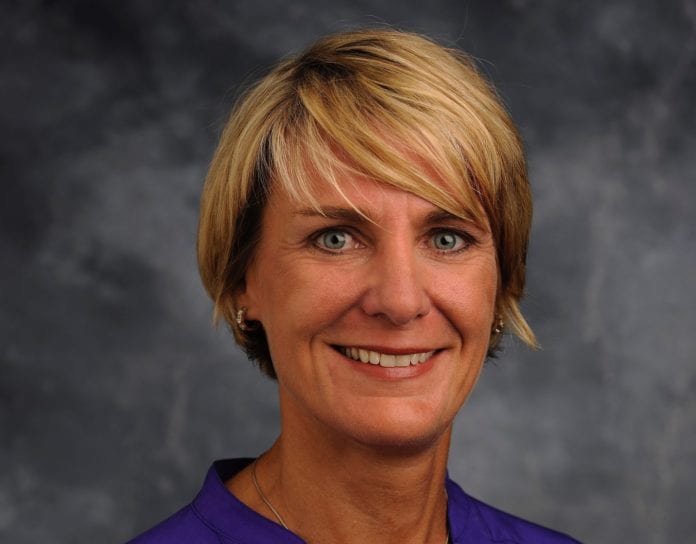Tektronix is navigating a number of changes, with the recent announcement of a new company president — the second this year — and the shifting of its video monitoring business into a co-ownership arrangement.
Tami Newcombe, who has been commercial president of Tek since 2017 leading global sales and marketing, has been promoted to Tektronix company president. She will take the position to which Marc Tremblay was appointed in January; Tremblay has since been appointed to the position of president of test and measurement company Fluke, which is also part of Tektronix parent company Fortive. Newcombe has 25 years of experience in Fortune 500 tech companies, having joined Tektronix from Cisco, where she held the role of VP for the company’s commercial sales; she has also held executive or engineering roles at Analog Devices and IBM. Newcombe holds both an MBA from Union College and bachelor’s degrees in electrical and bio engineering from Syracuse University.
Newcombe will report to former Tektronix president Pat Byrne, who currently serves as SVP at Fortive.
Byrne said that Newcombe is an experienced leader with a deep understanding of Tektronix’ customers and products and that as commercial president, she “delivered results, drove problem solving and innovation and demonstrated a strong ability to attract and develop high performing, customer obsessed teams. We’re excited about the continued impact she will make at Tektronix.”
In terms of Tek’s video testing and monitoring business — which serves the broadcast and digital media markets — the company announced this week that digital media tools company Telestream will be merging Tektronix Video into its business. Since Telestream is private, financial terms of the deal were not disclosed. The transaction will result in Telestream’s parent company Genstar Capital and Tek’s parent Fortive in a co-ownership arrangement. Tektronix’s video testing, monitoring and optimization solutions have more than 1,000 customers globally, including 95% of broadcasters and network service providers, the company said. Scott Puopolo, CEO of Telestream, will remain CEO of the combined company.
Fortive also reported its quarterly earnings this week, with revenues up 6.7% year-over-year to $1.6 billion and core revenue growth of 3.7%. Overall profits were down compared to the same time last year, with net earnings from continuing businesses at $146.7 million compared to $214 million in the year-ago quarter.
James Lico, president and CEO of Fortive, said in a statement that the results were “in line with our expectations, despite pressures from tariffs, foreign exchange rates, and some near-term headwinds in professional instrumentation.” He also said that the quarter’s performance “provided a solid start to 2019, setting us up to deliver another year of strong double-digit earnings growth.”
Fortive’s professional instrumentation segment reported sales of $947.3 million for the quarter, up from year-ago sales of $871.7 million. Segment operating profit was $136.2 million, down from $206.4 million in the same quarter of last year. Its industrial technologies unit had sales of $645.6 million — up from $620.5 million during the same period in 2018 — and operating profits of $105.3 million, up from $94.2 million in the year-ago period.
Earlier this month, the industrial technology company closed on its largest acquisition thus far: the $2.7 billion purchase of Johnson & Johnson’s advanced sterilization products business. Fortive reported that on an adjusted basis, when a number of acquisition-related value adjustments, amortization and transaction costs were taken into consideration, its earnings would have looked more like $245.6 million in the first quarter of 2019 and $230.2 million in the year-ago quarter.

